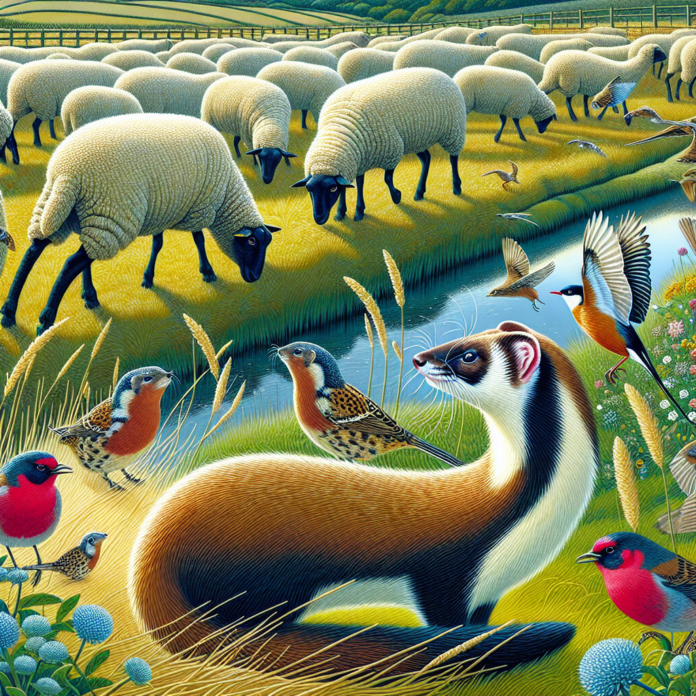Impact of Farming on Wildlife Including Sheep Stoats and Songbirds
Sheep, Stoats, and Songbirds: The Impact of Agriculture on Wildlife
Agriculture plays a significant role in shaping ecosystems and influencing wildlife populations. The interplay between farming practices and wildlife can be complex, with both positive and negative effects on local fauna. Among the species affected by agricultural activities are sheep, stoats, and songbirds, each of which interacts with the agricultural landscape in unique ways.
The Role of Sheep in Agricultural Landscapes
Sheep are often utilized in agricultural settings for their wool, meat, and milk. Their grazing habits can significantly alter plant communities, which can lead to changes in habitat structure. For instance, overgrazing by sheep can reduce the diversity of native plant species, ultimately impacting the insects and birds that depend on these plants for food and shelter. In some cases, managed grazing can be beneficial, as it can help maintain open grasslands that support certain bird species.
Stoats: Predators in the Agricultural Ecosystem
Stoats, small carnivorous mammals, can be both beneficial and detrimental to agriculture. While they help control populations of rodents and other pests, they can also pose a threat to ground-nesting birds, including songbirds. In agricultural settings, stoats may predate on vulnerable bird species, leading to declines in their populations. Effective management strategies, such as the use of predator control measures, are critical in balancing the benefits of stoats as pest controllers with the need to protect songbird populations.
The Decline of Songbird Populations
Songbirds are particularly sensitive to changes in their environment, and agricultural practices can significantly impact their survival. Habitat loss due to land conversion for farming, pesticide use, and changes in food availability are major contributors to the decline of songbird populations. Many songbirds rely on specific habitats for breeding and foraging, and the fragmentation of these habitats can lead to decreased reproductive success. Conservation efforts focusing on creating wildlife corridors and preserving native vegetation are essential for supporting songbird populations in agricultural areas.
Conservation Strategies and Sustainable Agriculture
To mitigate the adverse effects of agriculture on wildlife, sustainable farming practices are being promoted. These practices include crop rotation, organic farming, and the establishment of buffer zones around fields to protect habitats. Additionally, integrating wildlife-friendly practices, such as planting hedgerows and maintaining wetlands, can enhance biodiversity on farms. Collaboration between farmers, conservation organizations, and policymakers is crucial to develop strategies that support both agricultural productivity and wildlife conservation.
In conclusion, the relationship between agriculture and wildlife is multifaceted, with sheep, stoats, and songbirds all playing important roles in this dynamic. By implementing sustainable practices and focusing on conservation, we can work towards a future where agriculture and wildlife coexist harmoniously.


